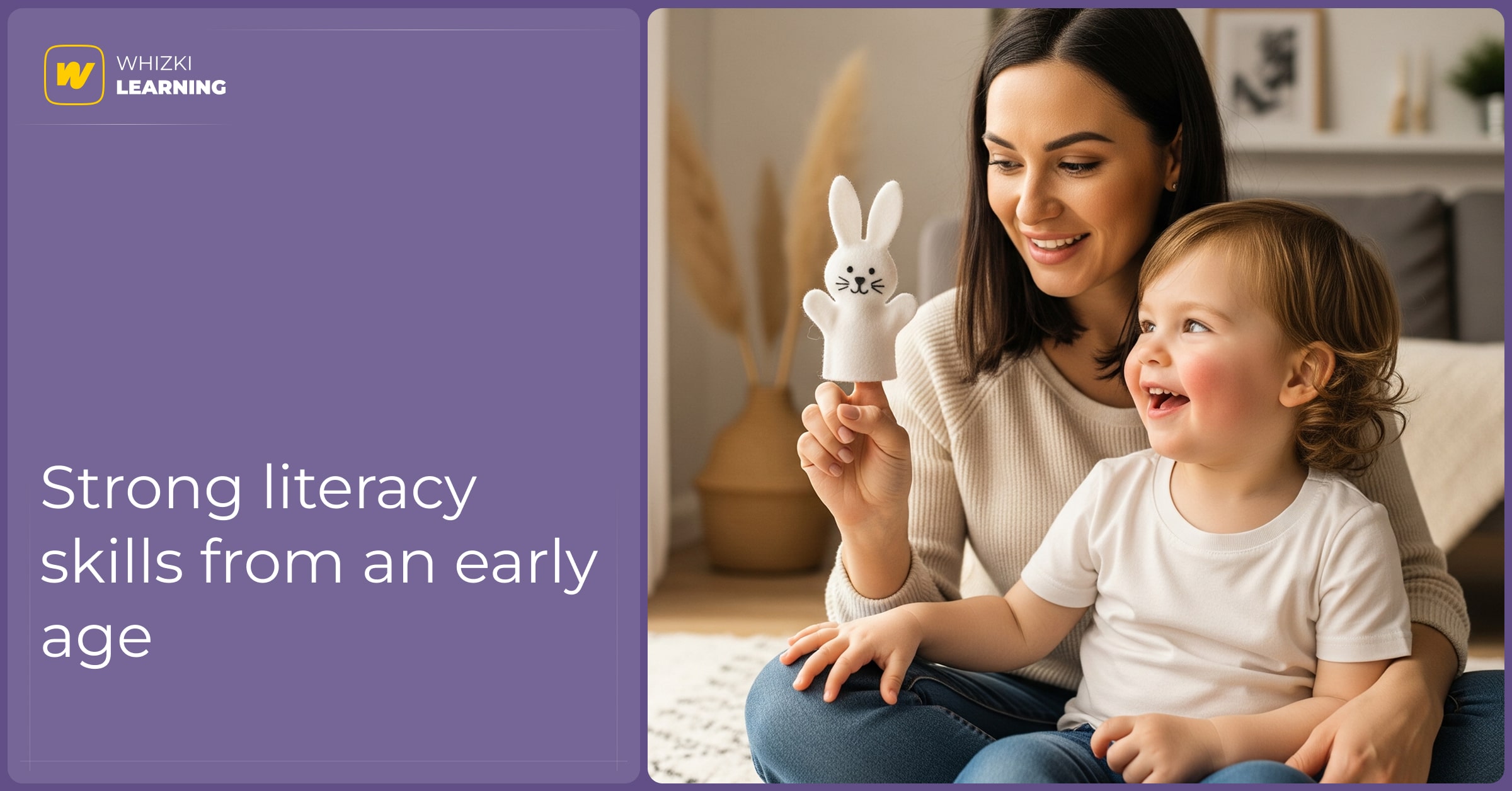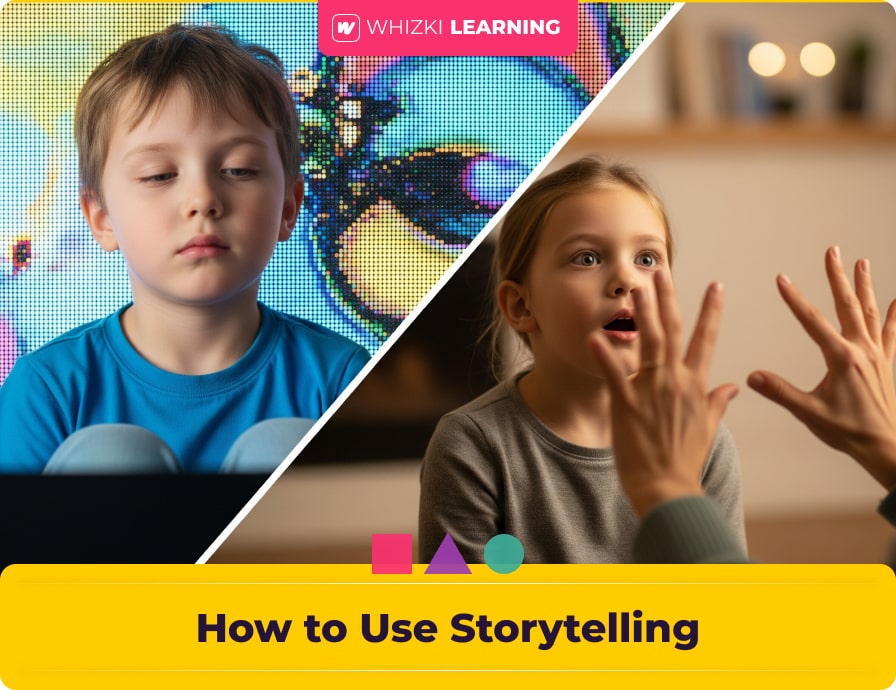Hey there, parents! Remember the magic of a good story? The way a simple narrative can transport you to another world, introduce you to new ideas, and make you feel deeply connected to the characters? For our children, this magic isn't just a pleasant pastime-it's one of the most powerful engines for brain development. In a world full of fast-paced, screen-based content, the quiet, intentional act of storytelling is a gift that builds a child’s imagination, vocabulary, and problem-solving skills, all at once.
At Whizki Learning, we believe in the power of a good story. This guide isn't about reading books (though that's wonderful too!), it's about the kind of storytelling you can do anywhere, anytime. We’ll show you how to be the main character in your child’s learning adventure and build their brain, one incredible tale at a time.
Chapter 1: The Building Blocks of a Great Story
You don't have to be a professional writer to be a great storyteller. The core of a good story for a young child is simple: a character, a problem, and a solution. This simple framework is a fantastic way to introduce your child to cause and effect, empathy, and narrative structure. This is the foundation of screen-free learning in its purest form.
How to Practice:
The “I Wonder” Game: Turn a daily moment into a question. “I wonder what the squirrel is looking for? Is he hiding a nut for winter?” This invites your child to think creatively about the world around them.
Character of the Day: Pick an object-a spoon, a toy car, a leaf-and make it a character. “This little spoon woke up this morning and was very, very hungry. What do you think the spoon wanted to eat?”
The Problem/Solution Story: Create a simple narrative. “The teddy bear wanted to go on a picnic, but it started to rain! What could the teddy bear do to stay dry?” This encourages your child to use their imagination to solve a problem.
Chapter 2: Boosting Vocabulary and Language Skills
When you tell a story, you can use a richer, more descriptive language than you might in a typical conversation. This is your chance to introduce new words in a meaningful, memorable context.
How to Practice:
Be Descriptive: Instead of saying, “The car went fast,” try, “The little red car zoomed and zipped down the long, winding road.”
Introduce New Words: Use a simple, unfamiliar word and then immediately explain it. “The hero was a very courageous knight. That means he was very brave and not afraid!” This is an easy way to build a robust vocabulary.
Let Them Narrate: Give your child a toy or a picture and ask them to tell you a story. This builds their own narrative skills and gives them a chance to practice all the wonderful words they are learning. This is a core part of building strong literacy skills from an early age without pressure.

Chapter 3: The Connection to Critical Thinking
Storytelling is a low-stakes way for a child to practice problem-solving and critical thinking. They are constantly making predictions, considering alternatives, and thinking about the consequences of a character’s actions.
How to Practice:
Ask Open-Ended Questions: Pause during a story and ask, “What do you think will happen next?” or “What would you do if you were the bear?” This prompts them to think critically and express their own ideas.
Change the Story: Reread a familiar story, but change a small detail. “What if the three little pigs used bricks from the beginning?” This challenges them to think about cause and effect in a new way.
Connect to Real Life: After a story, you can say, “Remember how the rabbit was feeling sad because he couldn't find his friend? How do you think our friend feels when we share our toys with them?” This builds empathy and helps them apply the lessons from the story to their own lives.
A simple story is a powerful thing. It’s an act of connection, a vehicle for language, and a fun way to build the foundational skills that will make your child a confident reader and a creative thinker. At Whizki Learning, we believe in supporting this natural journey. Our educational workbooks are the perfect place to record their own stories, practice new words, and draw their favorite characters. They are designed to be a beautiful, tactile notebook for the little narrator in your home. Ready to write your next chapter? Explore our full collection of educational workbooks and activities today!






